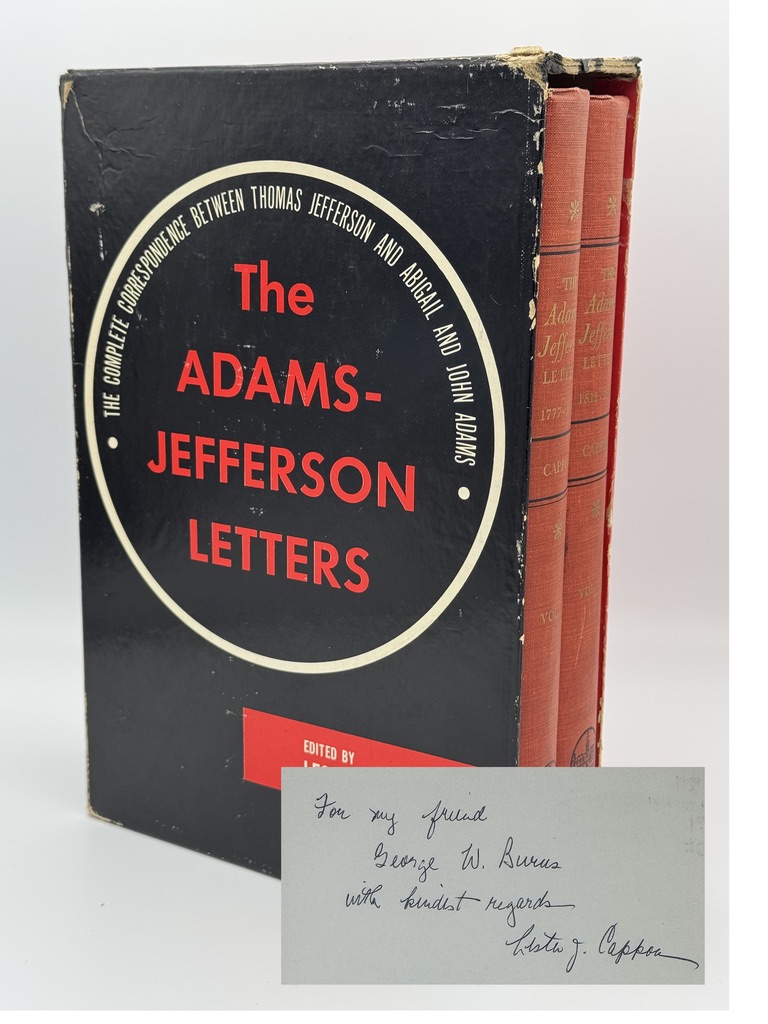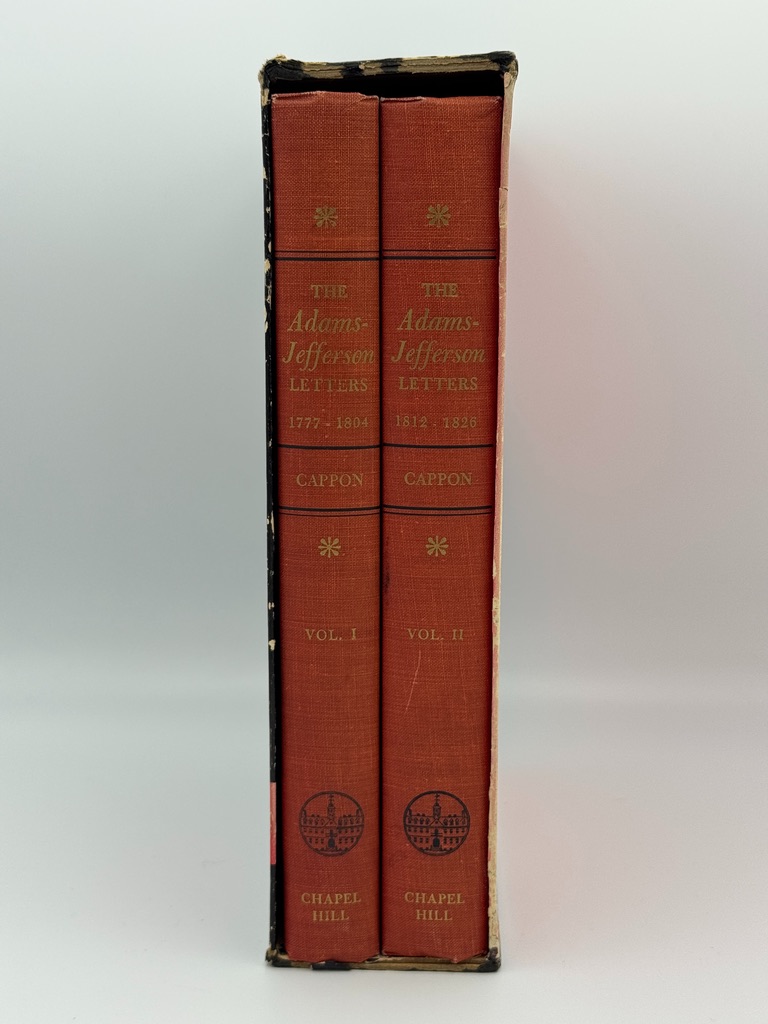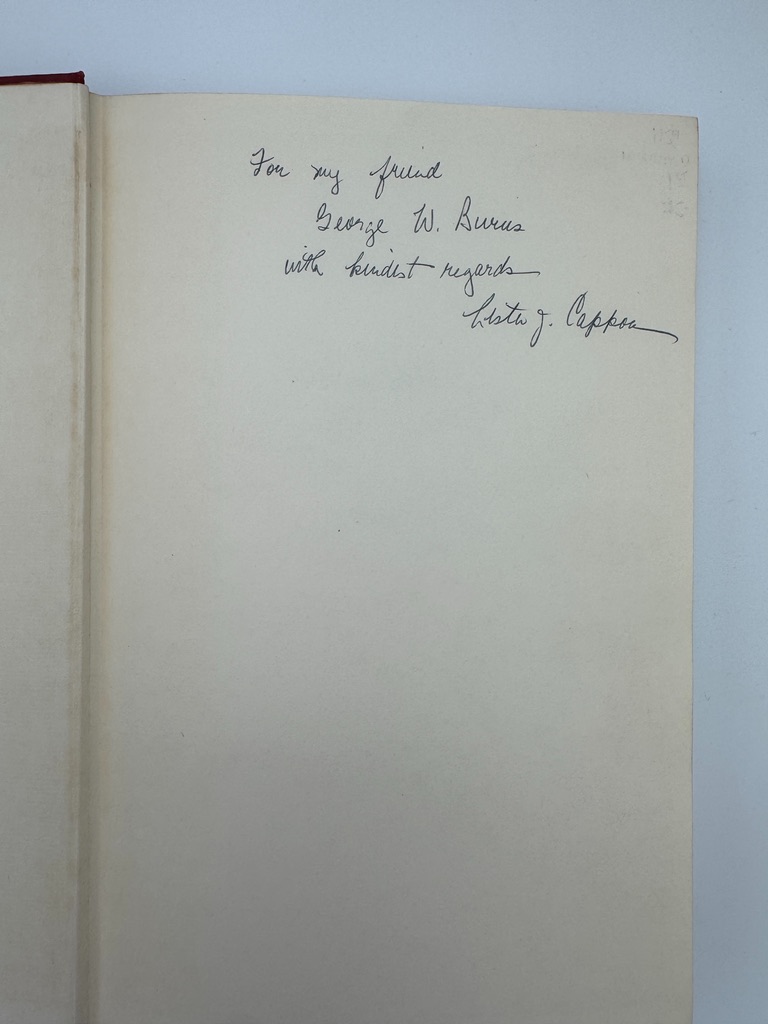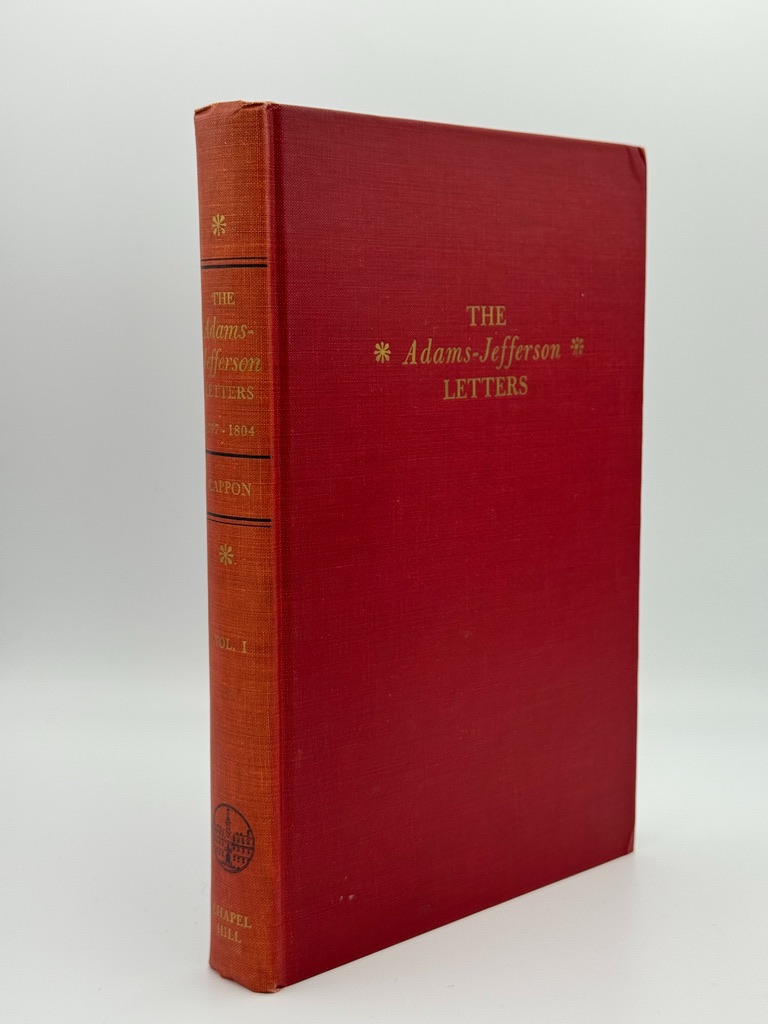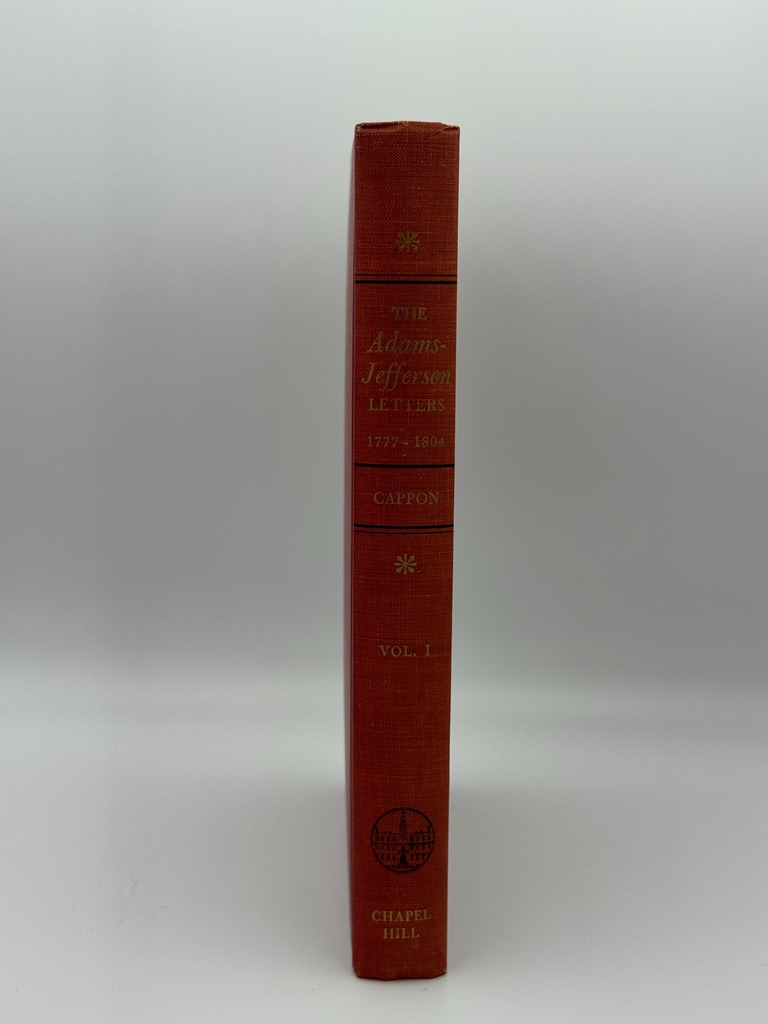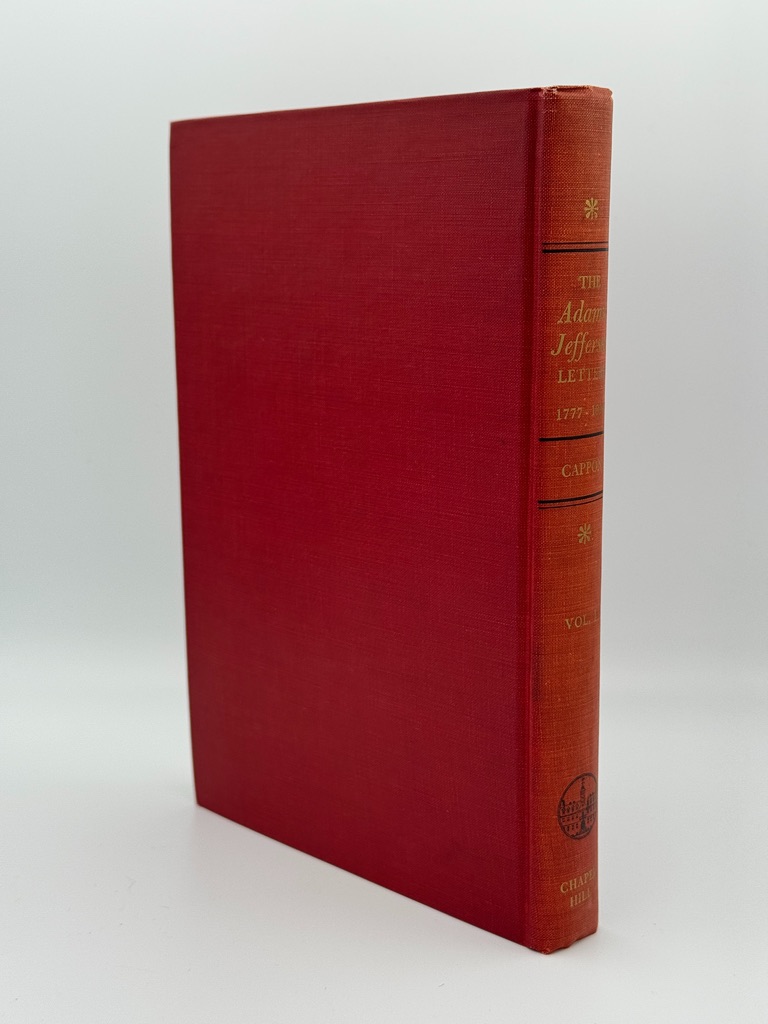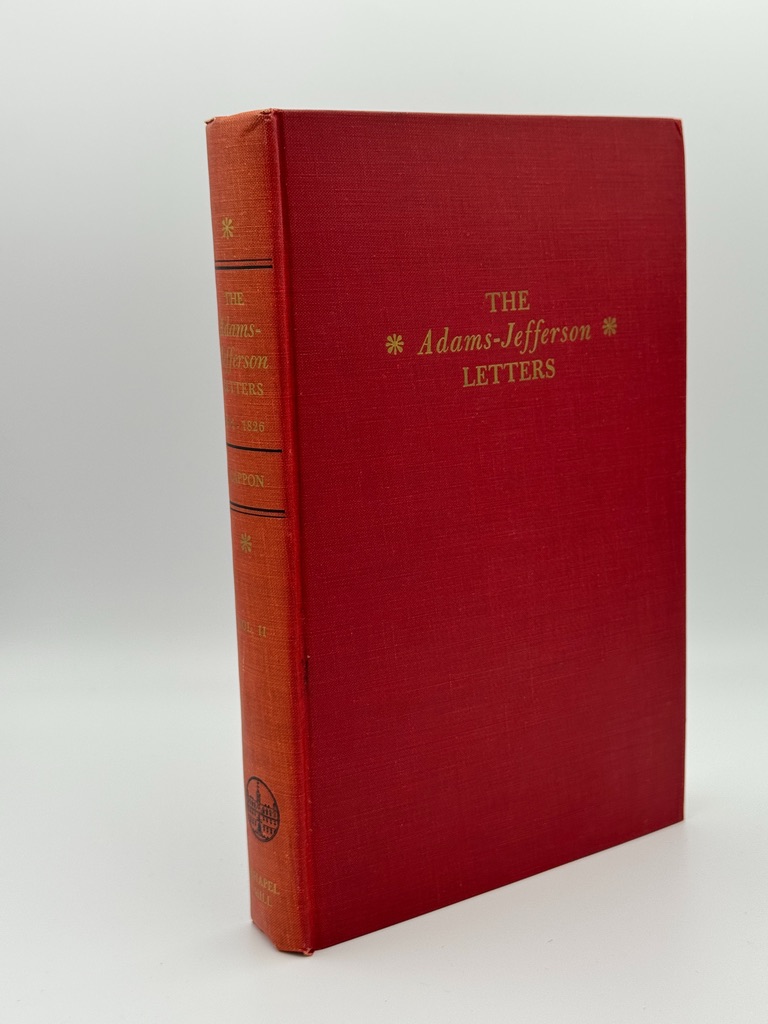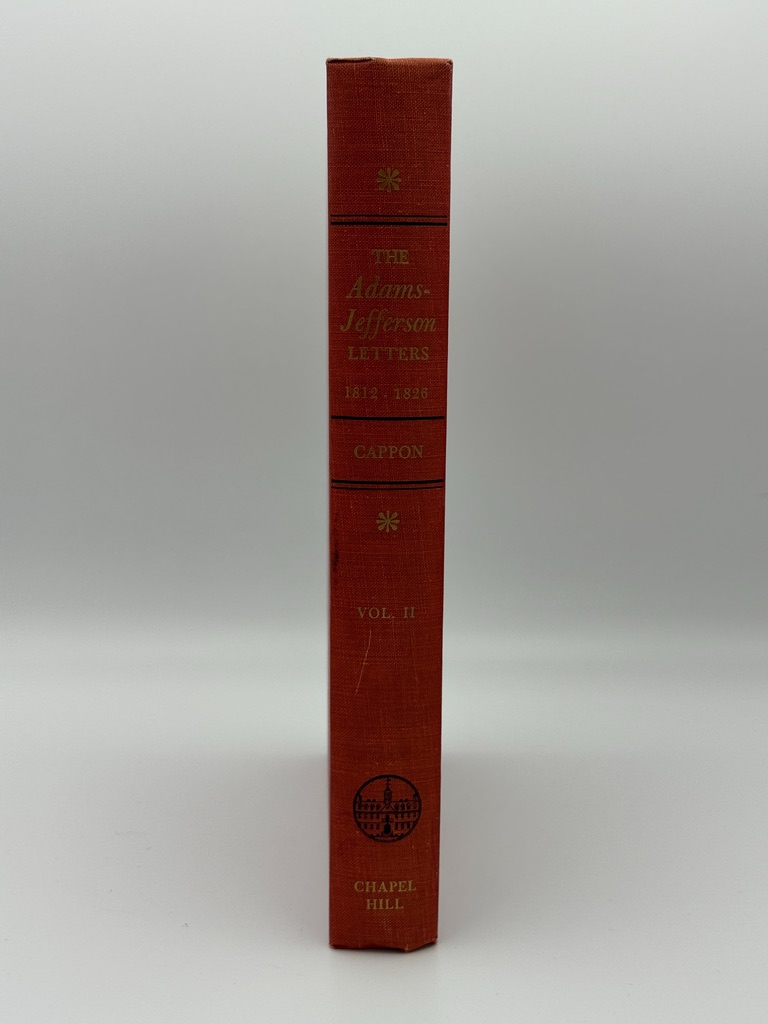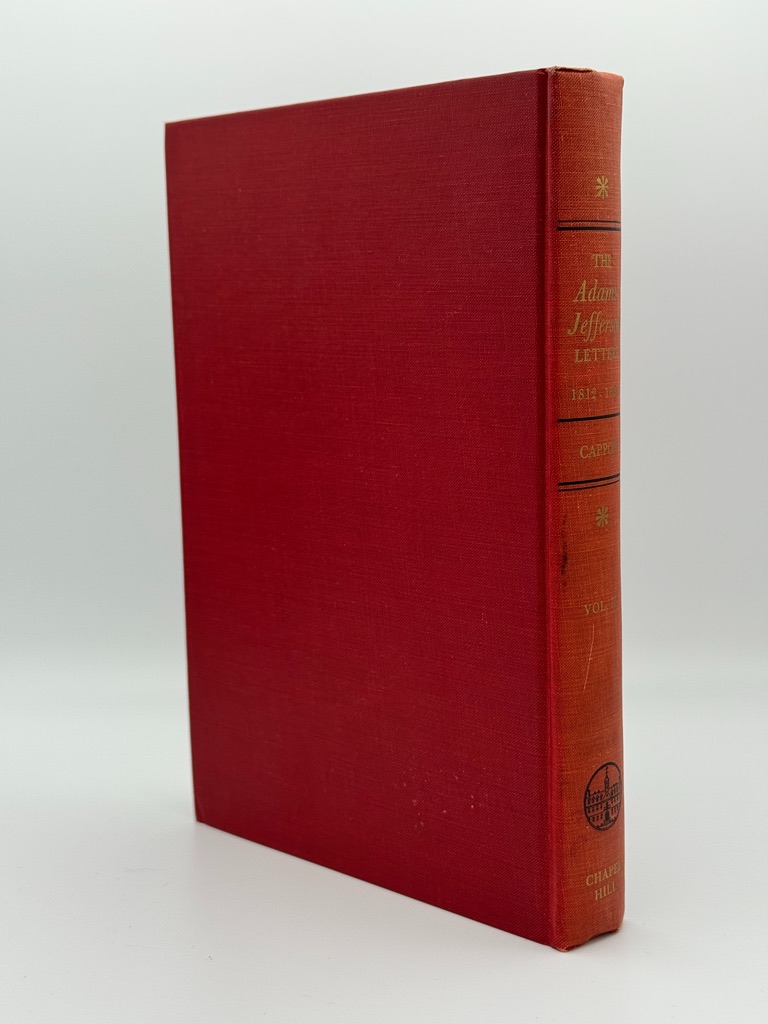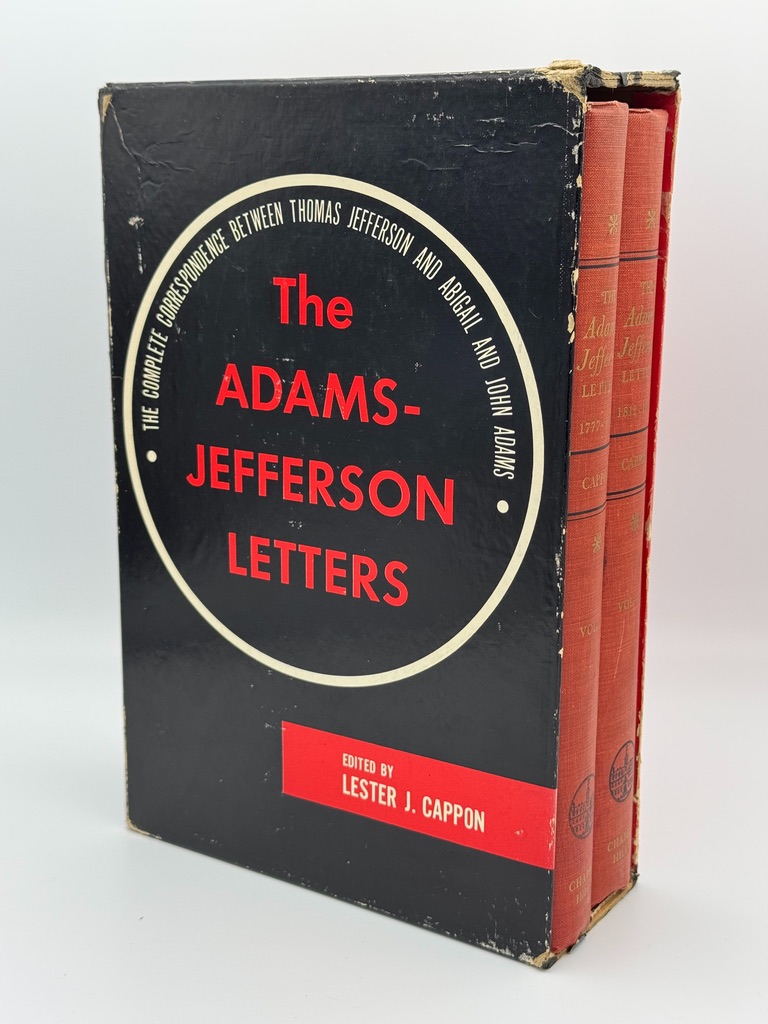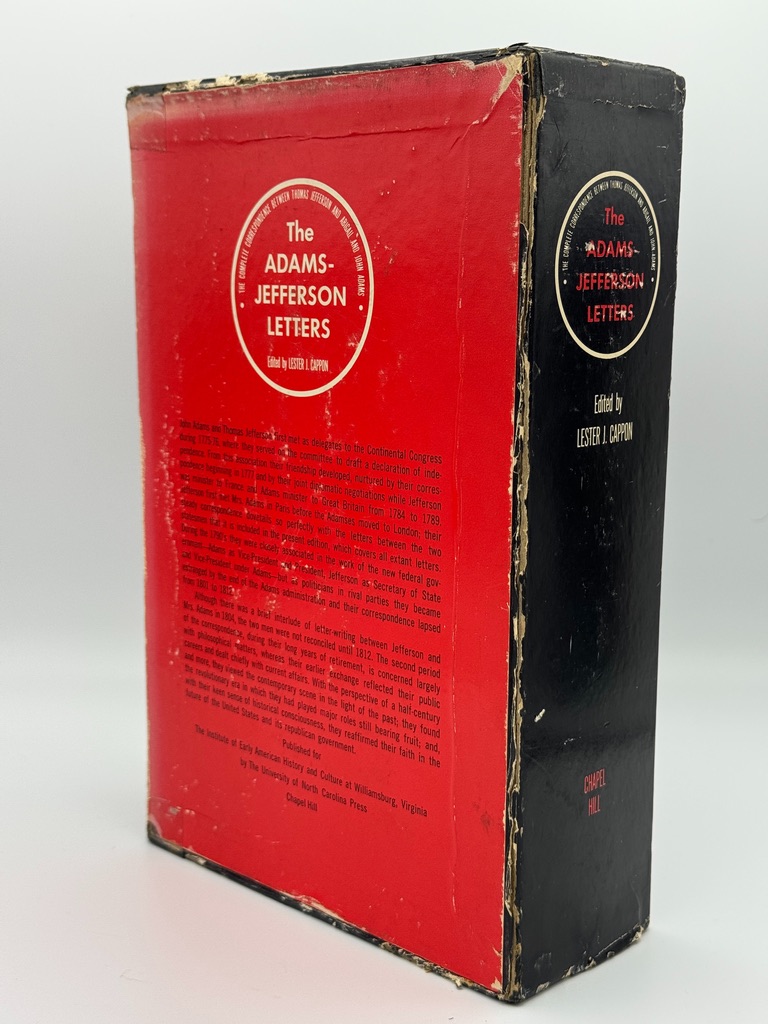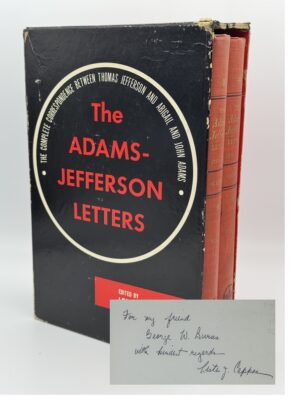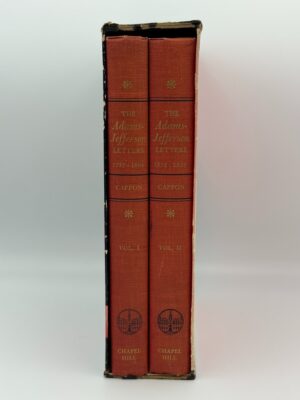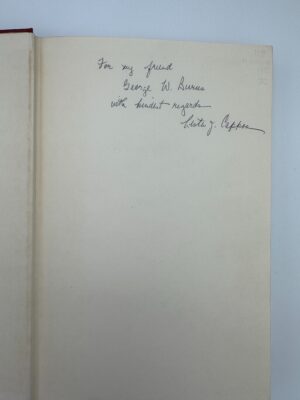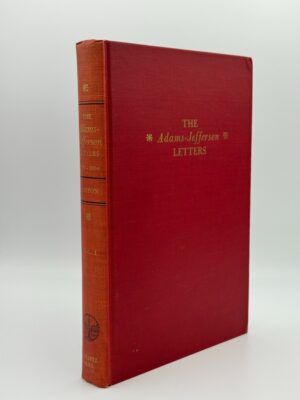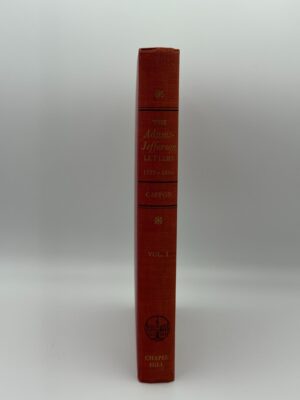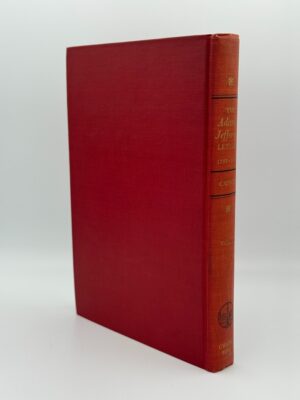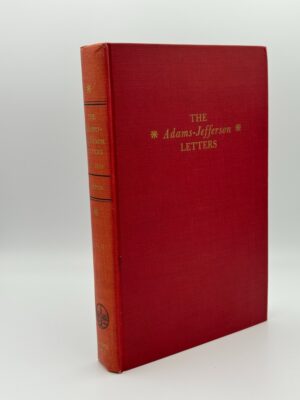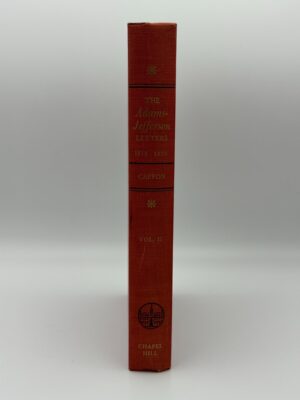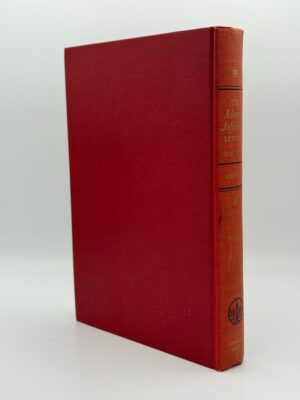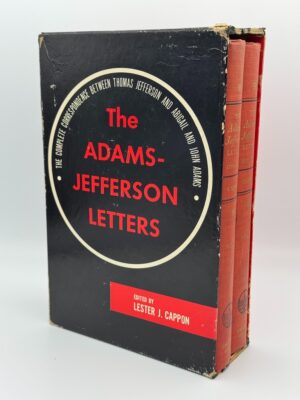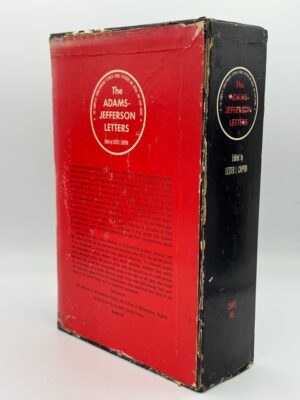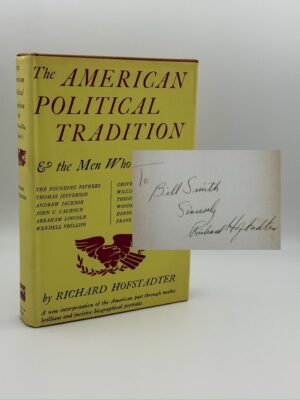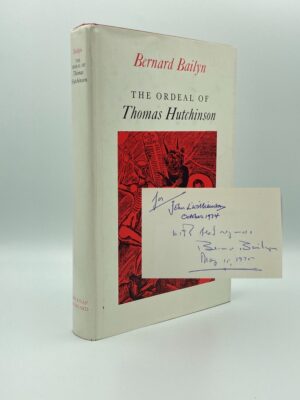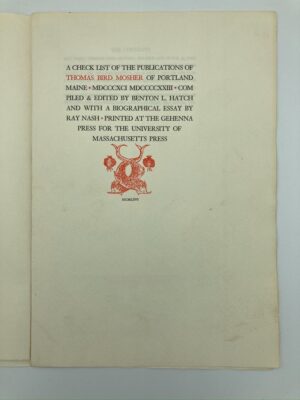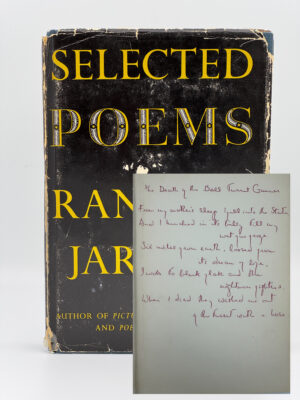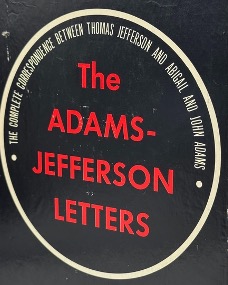
Founding Lines
A fictitious bookseller specializing in pre-Civil War U.S. history
Membership(s): VABA
Capon. Lester J. (editor)
The Adams-Jefferson Letters: The Complete Correspondence between Thomas Jefferson and Abigail and John Adams
$250.00
Capon. Lester J. (editor)
University of North Carolina Press: Chapel Hill, 1959. Two volumes.
Complete correspondence between founding fathers John Adams and Thomas Jefferson. Includes the correspondence between Abigail Adams and Jefferson.
Inscribed by editor Lester J. Capon. Spines lightly sunned otherwise fine. Slipcase rubbed at extremities with a few tape repairs. No dust wrappers as issued.
The correspondence between John Adams and Thomas Jefferson spanned half a century and embraced government, philosophy, religion, quotidiana, and family griefs and joys. First meeting as delegates to the Continental Congress in 1775, they initiated correspondence in 1777, negotiated jointly as ministers in Europe in the 1780s, and served the early Republic–each, ultimately, in its highest office. At Jefferson’s defeat of Adams for the presidency in 1800, they became estranged, and the correspondence lapses from 1801 to 1812, then is renewed until the death of both in 1826, fifty years to the day after the Declaration of Independence.
One of the monuments of American scholarship and, to quote C. Vann Woodward, ‘a major treasure of national literature.’
Related products
-
Hofstadter, Richard
The American Political Tradition and the Men Who Made It
$900.00New York: Knopf, 1948. First Edition. Inscribed to Bill Smith and signed by Hofstadter. While not definitively established, the recipient could be fellow historian William E(rnest) Smith, whose work The Francis Preston Blair Family in Politics is cited by Hostadter as a source and influence on his interpretations on anti-bank views (pages 355-56). Some pencil annotations sprinkled sporadically throughout the book. A very good copy married to later printing dust wrapper. less
moreOffered for Sale by: Founding Lines -
Bailyn, Bernard
The Ordeal of Thomas Hutchinson
$500.00Harvard University Press: Cambridge (MA), 1974. First Edition of this winner of the 1975 National Book Award in History. Inscribed “with best regards”, signed and dated by the author. The recipient, a student pursuing his MPA at Harvard where Bailyn was a professor at the time, had previously written in his name and date, hence a difference in hand-writing in the inscription. Spine a bit creased but book is tight and seemingly unread. Near fine in little rubbed, near fine dust wrapper. Books signed by Bailyn are scarce indeed. Few historians since World War II have left an imprint on that field of study that rivals Professor Bailyn’s. In his classic 1967 work, “The Ideological Origins of the American Revolution,” Bailyn reshaped the study of the origins of the American Revolution, maintaining that the ideology of liberty and freedom was ingrained in the colonists, displacing Charles A Beard’s then dominant theory that the American Revolution was primarily a matter of class warfare and that the rhetoric of freedom was meaningless. On topic after topic, in more than 20 books that he wrote or edited, Bailyn shifted the direction of scholarly inquiry, in the process winning two Pulitzer Prizes, a National Book Award, a Bancroft Prize (the most prestigious award given to scholars of American history) and, in 2011, the National Humanities Medal. less
moreOffered for Sale by: Founding Lines -
Baskin, Leonard. Hatch, Benton L (comp.)
A Checklist of the Publications of Thomas Bird Mosher of Portland Maine: MDCCCXCI-MDCCCCXXIII
$275.00Northampton, MA: The Gehenna Press, 1966. Limited edition, one of 500 Copies, printed on Fabriano Paper in Monotype Van Dijck. Illustrated with 19 Mounted Letter Press Facsimiles of Title pages in Red and Black on Paper closely Simulating those used by Mosher. This is the printer’s copy, inscribed by Baskin and presented to Stanley Clifford “with the affection of” Leonard Baskin, dated 1967. Clifford started as a hand leather bookbinder at Bennett Book Studio in Manhattan. He came to be respected as one of the finest craftsmen practicing this trade, a reputation that allowed work to follow him to Deer Isle, ME where he and fellow islander Leonard Baskin became close friends, attracted by a mutual interest in the book arts. Ironically, an unbound copy in 20 signatures. Some staining to rear page and signature spines. less
moreOffered for Sale by: The Accidental Bookseller -
Jarrell, Randall
Selected Poems
$1,500.00Alfred A. Knopf, New York, 1955. First edition. Unique copy, inscribed on the front pastedown and featuring a holograph of ‘The Death of the Ball Turret Gunner’, commonly viewed as the poet’s most widely known and frequently anthologized work. From my mother’s sleep I fell into the State,And I hunched in its belly till my wet fur froze.Six miles from earth, loosed from its dream of life,I woke to black flak and the nightmare fighters.When I died they washed me out of the turret with a hose. First published in 1945, the poem drew directly from Jarrell’s own involvement with military aircraft and airmen during WW2. “While the people and events of World War II are commonly found in Jarrell’s poetry, this poem is unique for its lack of wit. Indeed, the grim tone of this poem places it firmly in the Modernist movement of literature.” Jarrell reportedly “admitted to fearing most of his reputation as a poet is tied up in [this poem]. But, there are certainly worse outcomes for a poet’s career in this poem which has been referred to as the best war poem ever written.” Bottom corners a little scuffed, else nearly fine in good dust wrapper with unprofessional repairs to interior. less
moreOffered for Sale by: The Redbridge Book Co.

 USD
USD GBP
GBP EUR
EUR CAD
CAD AUD
AUD ZAR
ZAR